| Golden Journal No. 56
Dragon Rampant
Scenario Preview, Part Two
by Mike Bennighof, Ph.D.
August 2024
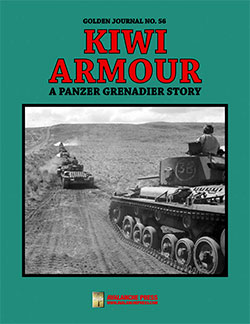 Golden Journal No. 56: Dragon RampantGolden Journal No. 56: Dragon Rampant brings the 1st New Zealand Army Tank Brigade to Panzer Grenadier. The brigade really existed and trained for the war in North Africa, but it would never see combat as a formation. Golden Journal No. 56: Dragon RampantGolden Journal No. 56: Dragon Rampant brings the 1st New Zealand Army Tank Brigade to Panzer Grenadier. The brigade really existed and trained for the war in North Africa, but it would never see combat as a formation.
The Journal includes the stories of the brigade and its tanks, and ten scenarios so you can use the 24 new pieces. In our first chapter, we looked at the New Zealand leadership’s desire for a tank brigade of their own, using the scenarios to see what sort of difference the formation would have made on the battlefield (the answer is, “a very big one”).
The second chapter brings the war closer to home, as the New Zealanders deploy their tanks to defend their islands. Let’s have a look at them.
Chapter Two
Homeland Defense
While Allied military leadership downplayed the possibilities of a Japanese invasion, the civilian government insisted on visible preparations to re-assure the public that any landings would be met by force. New Zealand did not receive Ultra and Magic code intercepts, or even summaries, that would have likely assuaged these fears. Immediately after the Battle of Savo Island in early August 1942, American theater commander Vice Admiral Robert Ghormley told New Zealand Prime Minister Peter Fraser, then visiting his headquarters, that the situation in the Solomons was dire and he should “look to his country’s defenses.” Ghormley refused Fraser’s request to attach a liaison officer to his staff; the Kiwis had no more detailed information than the releases issued by the South-West Pacific Area press office in Melbourne.
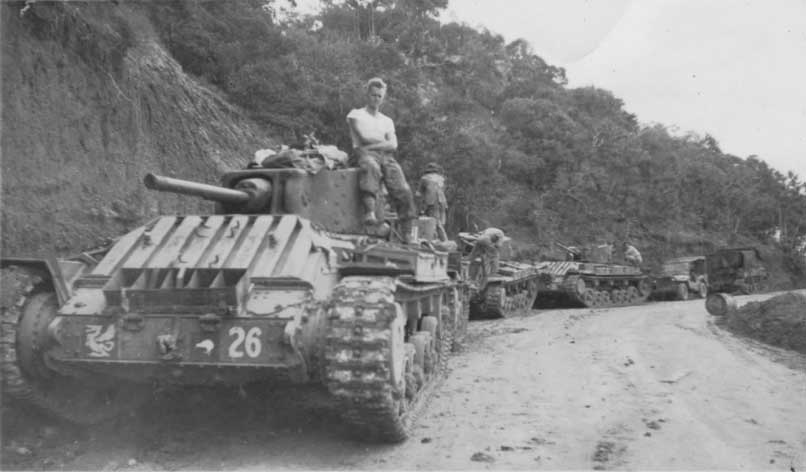
A Valentine CS of 3rd New Zealand Division on New Caledonia. Note the 1st Army Tank Brigade’s dragon rampant insignia.
Given the mushroom treatment (kept in the dark and fed a diet of shit), the New Zealand leadership rather naturally developed a pessimistic outlook as they prepared to meet the Japanese on their own beaches at any moment. New Zealand maintained three infantry divisions at home, with the 1st New Zealand Division responsible for the northern half of the more populous North Island (including the country’s major city, Auckland), the 4th Division covering the southern half of North Island (including the capital, Wellington), and the 5th Division defending the much larger but then-sparsely-populated South Island. These were supported by the newly-raised Light Armoured Fighting Vehicle Regiments, while workers frantically dug trenches and erected concrete gun positions at likely landing points.
When the enemy arrived (and following Ghormley’s advice, this seemed to be a matter of when rather than if), New Zealand would be ready.
Scenario Six
Golden Sands of Waipuka
August 1942
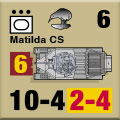 The beaches of Hawke’s Bay on the North Island’s eastern shore stood out to New Zealand defense planners as likely landing sites for Japanese invaders. Despite the strong current offshore, these offered broad, flat sands and a small port at Napier where reinforcements and heavy equipment could be unloaded. Coastal artillery and a garrison of Territorials kept watch here until August 1942, when the American landing on Guadalcanal appeared to end any possibility of a Japanese invasion. The beaches of Hawke’s Bay on the North Island’s eastern shore stood out to New Zealand defense planners as likely landing sites for Japanese invaders. Despite the strong current offshore, these offered broad, flat sands and a small port at Napier where reinforcements and heavy equipment could be unloaded. Coastal artillery and a garrison of Territorials kept watch here until August 1942, when the American landing on Guadalcanal appeared to end any possibility of a Japanese invasion.
Conclusion
Even in the darkest days of the Pacific War, a Japanese invasion of New Zealand was extremely unlikely, barring a complete collapse of Allied forces. The defenders would not have been the cream of the New Zealand Military Forces (those guys had all gone to the Middle East), but they would be fighting for their homeland.
Notes
What we have here is an amphibious landing scenario, with Japanese SNLF troops storming ashore to meet New Zealand Territorials. The Japanese have some amphibious tankettes to help out, but the Kiwis have the chance of receiving actual tanks.
Scenario Seven
Into the Sea
August 1942
 As more Japanese came ashore, the planned Kiwi response would be a prompt counter-attack, with the infantry of 7th Brigade Group backed by the newly-received tanks of Queen Alexandria’s Mounted Rifles. While the senior officers had been rotated through the 2nd New Zealand Division, the rank-and-file included no officers or men with combat experience (except for some Great War veterans). As more Japanese came ashore, the planned Kiwi response would be a prompt counter-attack, with the infantry of 7th Brigade Group backed by the newly-received tanks of Queen Alexandria’s Mounted Rifles. While the senior officers had been rotated through the 2nd New Zealand Division, the rank-and-file included no officers or men with combat experience (except for some Great War veterans).
Conclusion
It’s tough in Panzer Grenadier for a lower-morale attacker to eject a higher-morale defender from his positions, but a bunch of tanks sure help. The Valentine might not be top-of-the-line gear against the Germans in Tunisia, but it’s plenty adequate against the rattletraps the Japanese call tanks.
Notes
Now the Kiwis counter-attack the beachhead, with their shiny new Valentines and Stuarts leading the way. The Japanese are not exactly lavished with anti-tank weaponry and will have to tackle the tanks hand-to-grommet.
Daily Content includes no AI-generated content or third-party ads. We work hard to keep it that way, and that’s a lot of work. You can help us keep things that way with your gift through this link right here.
Scenario Eight
Highway 2
August 1942
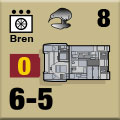 The fall of Napier – the Art Deco capital of the world – to the Japanese SNLF troops allowed the waiting troop transports to disgorge tanks, artillery, and the veterans of the 2nd Infantry Division. While the Japanese prepared to advance north and south from their beachhead, the New Zealand 1st Division organized a counter-attack from the north. The 1st Infantry Brigade, supported by the tanks of the Auckland and North Auckland Mounted Rifles, stormed down Highway 2 to crush the Japanese. The fall of Napier – the Art Deco capital of the world – to the Japanese SNLF troops allowed the waiting troop transports to disgorge tanks, artillery, and the veterans of the 2nd Infantry Division. While the Japanese prepared to advance north and south from their beachhead, the New Zealand 1st Division organized a counter-attack from the north. The 1st Infantry Brigade, supported by the tanks of the Auckland and North Auckland Mounted Rifles, stormed down Highway 2 to crush the Japanese.
Conclusion
The Type 97 medium tanks of the Japanese are more than adequate against unsupported enemies with low morale and cohesion, but even the Territorials will stand against them in defense of the homeland, and the Valentine medium tanks are almost impervious to their short-barreled popguns. Those Shinhoto “improved” models are going to be very important.
Notes
This is another large scenario, a meeting engagement between tank-supported Japanese and tank-supported New Zealanders. That’s not something you see in Panzer Grenadier every day.
Scenario Nine
Ruahine Foothills
August 1942
 The New Zealanders held a significant battlefield advantage with their Valentine medium tanks; the Japanese had few weapons that could harm them outside the sheer valor of their infantrymen. To continue the drive on Wellington, they would have to attack in some sector where the Kiwi tanks were not to be found. The foothills of the Ruahine Range seemed promising. The New Zealanders held a significant battlefield advantage with their Valentine medium tanks; the Japanese had few weapons that could harm them outside the sheer valor of their infantrymen. To continue the drive on Wellington, they would have to attack in some sector where the Kiwi tanks were not to be found. The foothills of the Ruahine Range seemed promising.
Conclusion
The rough ground of the Ruahine Forest would give the Japanese infantry a supposed advantage, where the thickly-armored Kiwi tanks would have difficult going. But the forest still possessed enough roads and semi-clear areas to allow tanks to operate, and the Kiwi defenders would grow ever more determined with Wellington behind them.
Notes
This time we have an infantry attack, a very large one with many troops involved, with some tank support on both sides. The New Zealand Stuart tanks weren’t really capable any more against German models, but they’re actually better than the Japanese “medium” tanks deployed against them.
Scenario Ten
Counter-Attack in Manawatu
August 1942
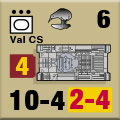 With the Japanese drives on Wellington and Auckland stalled, and reinforcements coming from South Island, the New Zealanders began a counter-offensive without waiting for the promised U.S. Marines. While the Territorials didn’t have the combat experience of the Expeditionary Force troops still fighting in Egypt, unlike their brothers in the Middle East they did have plenty of tank support. With the Japanese drives on Wellington and Auckland stalled, and reinforcements coming from South Island, the New Zealanders began a counter-offensive without waiting for the promised U.S. Marines. While the Territorials didn’t have the combat experience of the Expeditionary Force troops still fighting in Egypt, unlike their brothers in the Middle East they did have plenty of tank support.
Conclusion
The New Zealanders saw tanks as an adjunct to infantry, considering their foot soldiers the “best in the world.” A prepared assault would have been the proper place of tanks in Kiwi doctrine, and that’s what happens here though in very rough terrain. The Japanese only have a handful of weapons that can dent the Valentines, but in that close terrain their fanatic infantry has a chance to assault them.
Notes
We end with a big scenario; it’s my feeling that the Golden Journal format allows me (as the designer) to do things I wouldn’t in a book or game for sale to the general public, so we draw still more New Zealand pieces into play, this time from Parachutes Over Crete. Bigger is funner.
And that’s it for Dragon Rampant.
Golden Journal No. 56: Dragon Rampant tells the story of the 1st Army Tank Brigade, and of New Zealand’s armored formations in general. It’s in our usual Journal format, with 24 new pieces (all of them die-cut and silky-smooth) plus eight new Panzer Grenadier scenarios so you can play with them. This Journal’s tied to our Campaign Study, New Zealand Division, which added 88 New Zealand pieces and ten scenarios (in two chapters, each with a battle game) featuring the New Zealanders’ campaign in Tunisia to Panzer Grenadier: An Army at Dawn.
The Golden Journal is only available to the Gold Club (that’s why we call it the Golden Journal).
Click here to join the Gold Club.
See your Gold Club Insider newsletter for ordering information.
Sign up for our newsletter right here. Your info will never be sold or transferred; we'll just use it to update you on new games and new offers.
Mike Bennighof is president of Avalanche Press and holds a doctorate in history from Emory University. A Fulbright Scholar and NASA Journalist in Space finalist, he has published a great many books, games and articles on historical subjects; people are saying that some of them are actually good.
He lives in Birmingham, Alabama with his wife, three children, and new puppy. He misses his lizard-hunting Iron Dog, Leopold.
Daily Content includes no AI-generated content or third-party ads. We work hard to keep it that way, and that’s a lot of work. You can help us keep things that way with your gift through this link right here.
|
